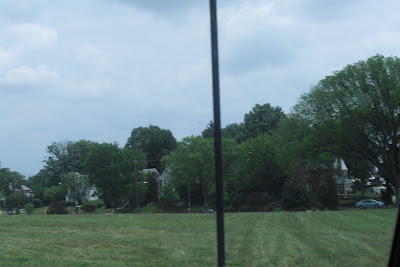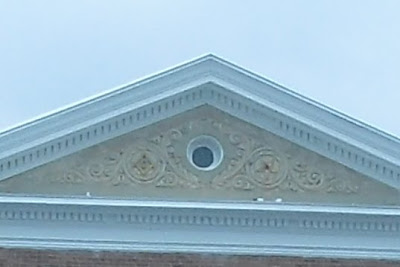
Malcom Kenton provides this photo at Greater, Greater, Washington, with this caption:
"As I recently suggested, imagine this mini-highway decked over to become a tree-lined plaza framing the view of the Capitol dome"
Indeed at that earlier article, he writes:
http://greatergreaterwashington.org/post/8321/make-north-capitol-street-a-true-gateway/
DDOT should begin by studying the cost, feasibility and impacts of decking over the dug-in portion of North Capitol between Rhode Island Avenue and T Street and creating an attractive public square — replacing a noisy eyesore with a neighborhood amenity. Should a full decking over prove prohibitively expensive, other more affordable aesthetic enhancements, such as covering the fences with native flowering vines, ought to be considered.
The planned park covering Dallas's Woodall Rodgers Freeway. Photo from the Dallas Observer
blog.
Converting highway corridors into public parks is becoming a trend amongst American cities. Boston exemplifies how greatly a city can be enhanced when an ugly highway corridor is put underground and converted into a well-designed park. Dallas also seeks to convert its Woodall Rodgers Freeway into greenspace.
Improvements to the North Capitol Street and New York Avenue intersection should also seek to address traffic bottlenecks. The ramp from southbound North Capitol onto New York Avenue, which is now used by two high-ridership Metrobus routes and several delivery trucks, is a notorious one. A redesign of this intersection that improves traffic flow, while also leaving space for a greenery or a public monument or fountain would greatly benefit this developing part of
the city.
Instead of a noisy, unattractive mini-freeway that benefits those driving through Bloomingdale, Eckington, Truxton Circle, NoMa at the expense of those who live along it, future residents and business owners and patrons could benefit from visual enhancements that complement the surrounding Victorian architecture and the view of the Capitol, while still allow traffic to flow smoothly. Turning this part of the North Capitol Street corridor into a desirable destination would generate benefits that could exceed the significant costs of remaking parts of the infrastructure.
Capping the depressed segments of North Capitol Street (the photo above is of the northern segment that crosses beneath Rhode Island Avenue NE) would convert them into cut and cover tunnels, expanding upon the efficency of the below ground cut with a roof to further the social benefits. As these are roads allowing and reconciling greater human activity within a given footprint, one could imagine environmentalist organizations favoring their construction- provided a philosophy of human growth.
Around 2005 District authorities conducted a study of the Truxton Circle area of North Capitol Street between the two depressed segments of North Capitol Street- that included an option for a cut and cover segment in this area effectively connecting the two existing depressed segments. IIRC, it did not surface or provide intermediate connections to the surface at Florida Avenue, with sparce consideration of such.
Nor, AFAIK has there been consideration of any other concepts for extending the depressed segment[s], let alone that for extending the 'cap'.
The two depressed segments appear to be a part of an upgraded North Capitol Street, that was planned to connect with the planned North Central and Northeast Freeways, as seen
here (
image), and
here (
image).
























































